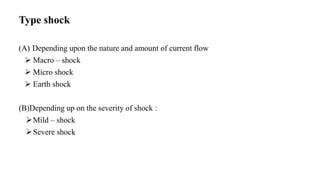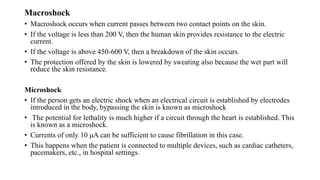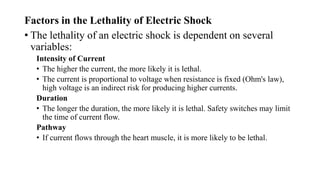An electric shock occurs when a person comes into direct contact with an electrical energy source, causing electrical energy to flow through a portion of the body. The severity of the shock depends on factors like voltage, current, path through the body, and duration of contact. Symptoms can range from pain to burns to cardiac arrest. Treatment involves removing the person from the energy source and providing first aid like CPR if needed while waiting for emergency medical assistance. Prevention strategies include equipment maintenance, ground fault circuit interrupters, and avoiding contact with energy sources when wet or in water.























